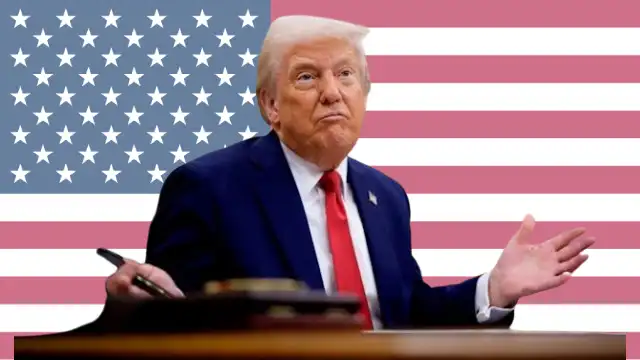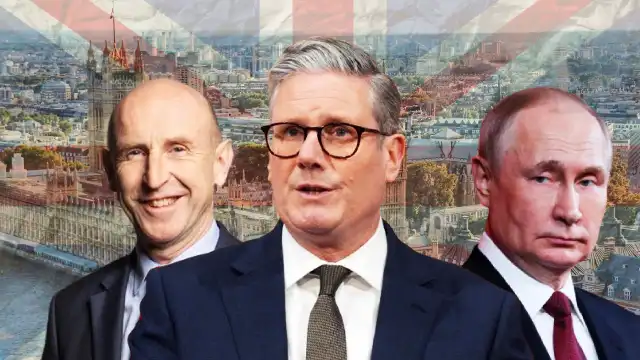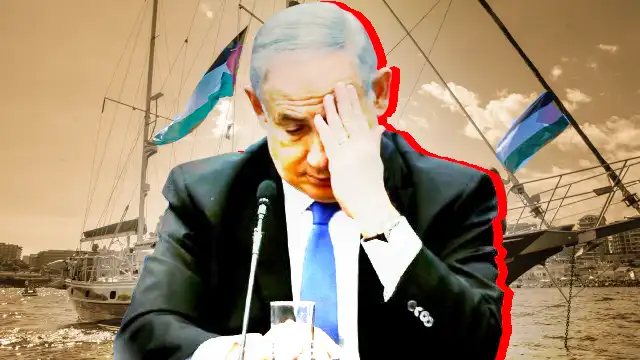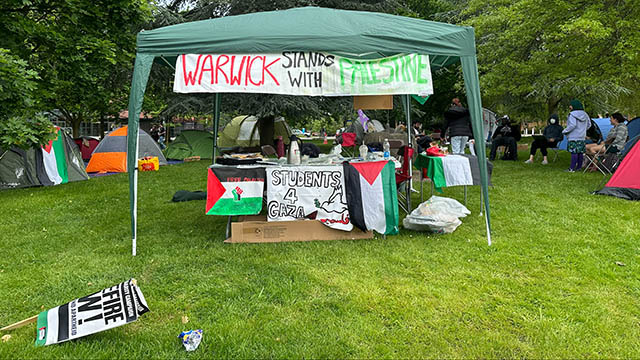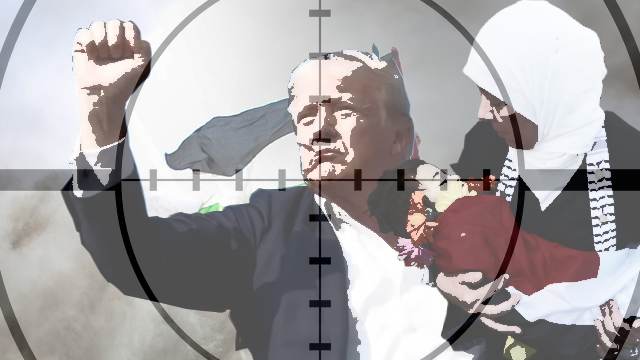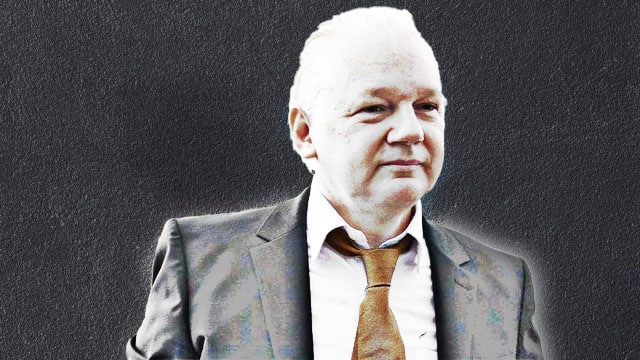Donald Trump has embarked on his first Middle East tour since returning to the White House in January 2025. The American president’s visit to Saudi Arabia and Qatar in May 2025 focused primarily on arms deals. Mr Trump eagerly promoted weapon sales to the Saudis while his closest ally, Israel, continued to bomb civilians in Gaza. This approach to Middle East diplomacy has drawn sharp criticism from Palestinian resistance groups.
Riyadh rhetoric meets brutal reality
Mr Trump delivered what his administration billed as a major address in Riyadh.
He outlined what he called “an optimistic vision” for the future of the Middle East. His speech portrayed a region moving away from conflict toward cooperation.
“Exactly eight years ago this month, I stood in this very room and looked forward to a future in which the nations of this region would drive out the forces of terrorism and extremism … and take your place among the proudest, most prosperous, most successful nations anywhere in the world as leaders of a modern and rising Middle East,” Mr Trump declared.
This rhetoric failed to acknowledge the reality unfolding in Gaza. Israeli forces killed over 40 people during his speech alone.
The disconnect between Mr Trump’s Middle East vision and the ongoing bloodshed was stark.
“Before our eyes, a new generation of leaders is transcending the ancient conflicts and tired divisions of the past, and forging a future where the Middle East is defined by commerce, not chaos; where it exports technology, not terrorism; and where people of different nations, religions, and creeds are building cities together — not bombing each other out of existence,” he continued, overlooking America’s own destructive role in the region’s recent history.
Trump’s surprising Middle East realignments
In a surprising diplomatic move, Mr Trump held talks with Ahmad al-Sharaa, also known by his nom de guerre Abu Mohammad al-Jolani. Once branded a terrorist by America, al-Sharaa now leads Syria after ousting President Bashar al-Assad. The White House announced it would remove sanctions on Syria that had been in place for decades.
This dramatic shift in Middle East alliances included a meeting between Mr Trump, al-Sharaa and Saudi Crown Prince Mohammed bin Salman, with Turkish President Recep Tayyip Erdogan joining by phone.
White House Press Secretary Karoline Leavitt described the gathering as a “historic opportunity” for peace and reconstruction in Syria.
The meeting marks an extraordinary rehabilitation for al-Julani, whom American officials previously condemned as a terrorist leader. This inconsistency in Trump’s Middle East policy—condemning some armed groups while embracing others—reflects a pragmatic but unprincipled approach to regional politics.
Qatar’s spending spree
The Middle East tour’s second leg took Mr Trump to Qatar. There, he trumpeted what he called a “record” order for Boeing aircraft.
“It’s over $200bn, but 160 in terms of the jets. That’s fantastic. So that’s a record,” Mr Trump boasted, claiming Qatar’s order was Boeing’s largest ever.
The Qatar visit also produced defence agreements. These included cooperation arrangements and Qatar’s purchase of American MQ-9B drones. The agreements followed roughly two hours of discussions with Qatar’s Emir Sheikh Tamim bin Hamad Al Thani.
In total, the White House claimed to have secured economic commitments worth at least $1.2 trillion from Qatar. This included economic deals totalling more than $243.5bn between the US and Qatar. The Boeing and GE Aerospace deal with Qatar Airways reportedly totalled $96bn for up to 210 Boeing 787 Dreamliners and 777X aircraft.
Middle East interventionism repackaged
Mr Trump’s Middle East speech attempted to distance his administration from previous American policies. He criticised what he called “Western interventionists”.
“This great transformation has not come from Western interventionists … giving you lectures on how to live or how to govern your own affairs. No, the gleaming marvels of Riyadh and Abu Dhabi were not created by the so-called ‘nation-builders,’ ‘neo-cons,’ or ‘liberal non-profits,’ like those who spent trillions failing to develop Kabul and Baghdad, so many other cities. Instead, the birth of a modern Middle East has been brought about by the people of the region themselves … developing your own sovereign countries, pursuing your own unique visions, and charting your own destinies,” he said.
This self-serving narrative conveniently ignores America’s continued military involvement in the region. His administration has heavily funded Israel’s military campaign in Gaza while selling advanced weapons to Gulf states.
“In the end, the so-called ‘nation-builders’ wrecked far more nations than they built — and the interventionists were intervening in complex societies that they did not even understand themselves,” he added.
This statement came as his government continued to fund what many international observers call the biggest genocide of the 21st century.
Trump’s Middle East peace rhetoric versus reality
Mr Trump’s Middle East diplomacy rests on a foundation of contradictions. He claimed to seek peace while arming numerous parties in the region.
“After so many decades of conflict, finally it is within our grasp to reach the future that generations before us could only dream about — a land of peace, safety, harmony, opportunity, innovation, and achievement right here in the Middle East,” Mr Trump said.
Yet his administration’s support for Israel’s Gaza campaign undermines this peace rhetoric. He has reportedly encouraged Israel’s Benjamin Netanyahu to “clear off” Gaza, allegedly to make way for his real estate ambitions in the region.
The president attempted to reframe American Middle East policy as non-judgmental: “In recent years, far too many American presidents have been afflicted with the notion that it’s our job to look into the souls of foreign leaders and use US policy to dispense justice for their sins … I believe it is God’s job to sit in judgement — my job [is] to defend America and to promote the fundamental interests of stability, prosperity, and peace.”
Military might in the Middle East
Mr Trump’s Middle East strategy still relies heavily on military power. He boasted about American attacks on Yemen’s Houthis.
“Following repeated attacks on American ships and freedom of navigation in the Red Sea, the United States military launched more than 1,100 strikes on the Houthis in Yemen. As a result, the Houthis agreed to stop … We hit them hard, we got what we came for — and then we got out,” he claimed.
This account omits important context. The Houthis proved remarkably resilient against American attacks. They destroyed over 23 MQ9 drones and reportedly damaged the USS Harry Truman in the Red Sea. The United States eventually ceased operations after failing to break the Houthi resolve.
Arms dealing as Middle East diplomacy
Trump’s Middle East tour primarily functioned as a sales pitch for American weapons manufacturers. The deal with Saudi Arabia bundles $142bn in American weapons—Patriots, THAAD batteries, armed drones, and a pathway to F-35s.
It also includes energy projects, civil-nuclear initiatives, and the establishment of American arms assembly lines within Saudi Arabia.
Arab media offered scathing critiques of this approach.
Al-Mayadeen noted that the signing ceremony occurred between two Israeli air raids on Gaza.
Al-Manar argued that the package deepens Riyadh’s military dependence on America and undermines Arab strategic autonomy.
Al-Akhbar described the spectacle as “trading in death”, highlighting how Saudi money bankrolls American contractors while the Israelis “field-test the merchandise” on Palestinian civilians.
Meanwhile, Mr Netanyahu promised continued military operations in Gaza.
“We will enter with full force to complete Hamas’s defeat in the coming days. There will never be a situation in which we stop the war; at most we may reach a temporary cease-fire for a limited time and then resume until the end,” the US-backed Israeli prime minister said.
Trump’s transactional Middle East policy
Trump’s Middle East tour reveals a purely transactional approach to regional diplomacy. Critics characterise it as a cycle of destruction and profit: Riyadh pays, Washington ships, and Tel Aviv drops.
The president’s willingness to deal with figures like al-Julani demonstrates that his administration has no ideological commitments beyond securing financial advantages for American companies.
This mercenary approach to Middle East policy has real consequences. Gaza remains under bombardment. Gulf states imprison citizens who express support for Palestinians online.
The weapons Mr Trump so eagerly sells will likely escalate regional conflicts rather than resolve them.
For those living in the Middle East, Mr Trump’s vision offers little hope. His promotion of peace rings hollow when accompanied by billions in arms sales.
The true agenda behind his diplomatic overtures appears to be securing lucrative contracts for American companies, regardless of how those weapons might be used.
Join our channels on Telegram and WhatsApp to receive geopolitical updates, videos and more.

